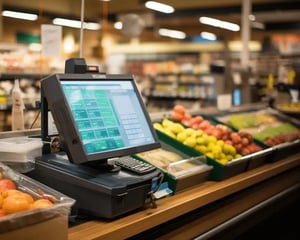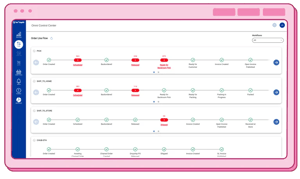
See how Nextuple’s system integration services unified a global fashion brand’s order management, boosting efficiency, cutting costs, and enhancing customer experiences worldwide.
Executive Summary
A leading global fashion house operating over 1,400 stores across three iconic brands sought to overcome the limitations of its fragmented legacy order management systems. To support the company’s digital transformation program, Nextuple provided strategy consulting, software development, and integration services to consolidate disparate systems and create a unified, global order management system (OMS). The result of the transformation was increased efficiency, reduced costs, and improved customer experience.
Executive Summary

The Customer

The Opportunity
Given that multiple OMS platforms were used across different brands and geographies (North America, Europe, and Japan), this led to data inconsistencies and operational inefficiencies in various areas. They also lacked a centralized view of inventory across stores, warehouses, and vendors, which hampered timely and efficient fulfillment and transparency in inventory management. Multiple outdated applications resulted in high maintenance costs, complex integrations, and poor user experience for both customers and employees. Furthermore, it forced customer service teams to use multiple call center applications, and store associates needed to use several applications to manage store operations which led to high productivity losses and increased training costs.
The Challenge/Opportunity
As mentioned, given that multiple OMS platforms were used across different brands and geographies (North America, Europe, and Japan), this led to data inconsistencies and operational inefficiencies in multiple areas. They also lacked a centralized view of inventory across stores, warehouses, and vendors, which hampered timely and efficient fulfillment and transparency in inventory management. Multiple outdated applications resulted in high maintenance costs, complex integrations, and poor user experience for both customers and employees. Furthermore, it forced customer service teams to use multiple call center applications, and store associates needed to use several applications to manage store operations which led to high productivity losses and increased training costs.

The Solution
Nextuple partnered with the fashion house to address these challenges through a multi-year IT transformation journey focused on consolidating and modernizing its order management systems and supporting processes. Nextuple provided expert guidance in evaluating and selecting the optimal OMS vendor platform to meet the company's specific needs and future goals. This included developing a comprehensive enterprise architecture roadmap to ensure seamless integration of the new OMS with existing systems. In addition, Nextuple provided expert software development and implementation services for the chosen IBM Sterling OMS platform, including customizations, integration to other e-commerce solutions, and automated testing of the end-to-end solution.

The Results
By partnering with Nextuple, the fashion house significantly improved its order management capabilities. It now has a single, unified OMS platform that provides a consolidated view of orders and inventory across all brands and geographies. Streamlined workflows and automated processes have increased operational efficiency and reduced manual effort. Consolidating systems and eliminating legacy applications has resulted in significant cost savings in maintenance and overhead and reduced training and support costs. Customers now enjoy improved order accuracy, faster fulfillment, and a consistent experience across all channels.
The Results
